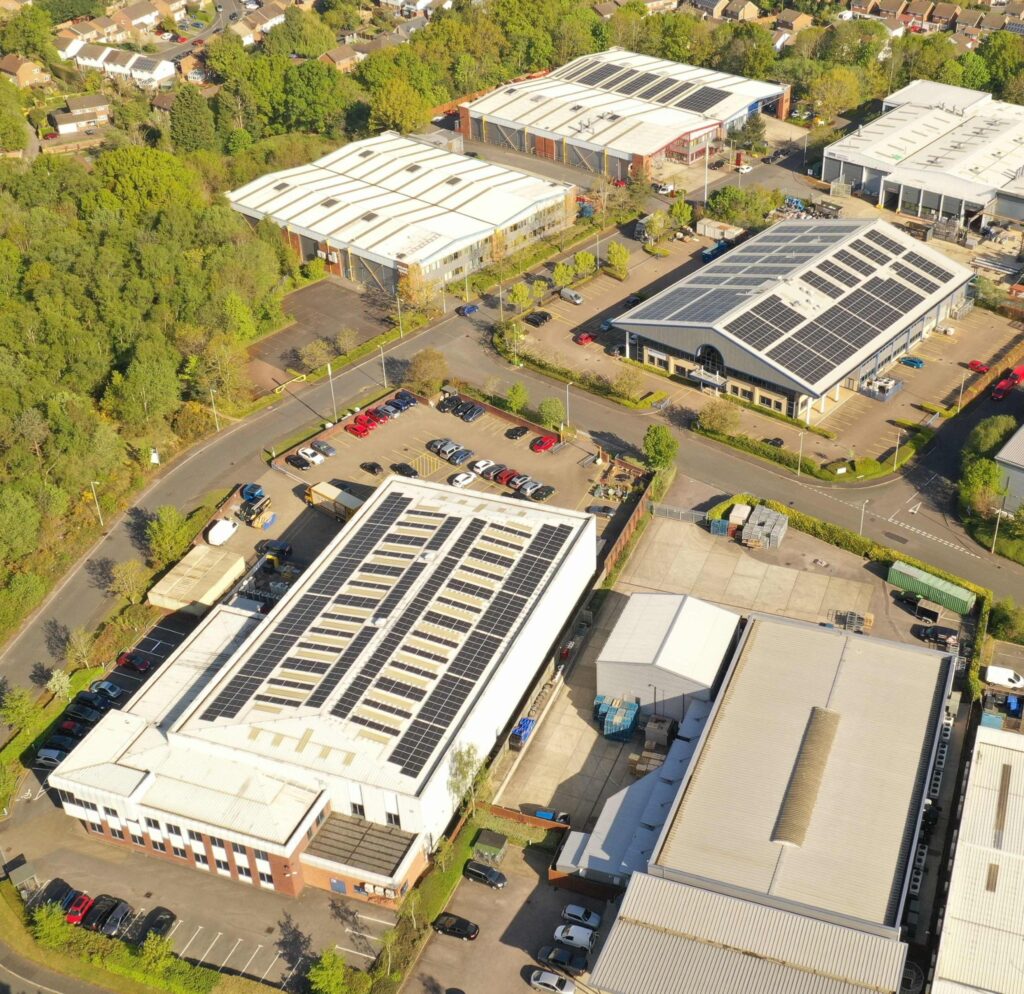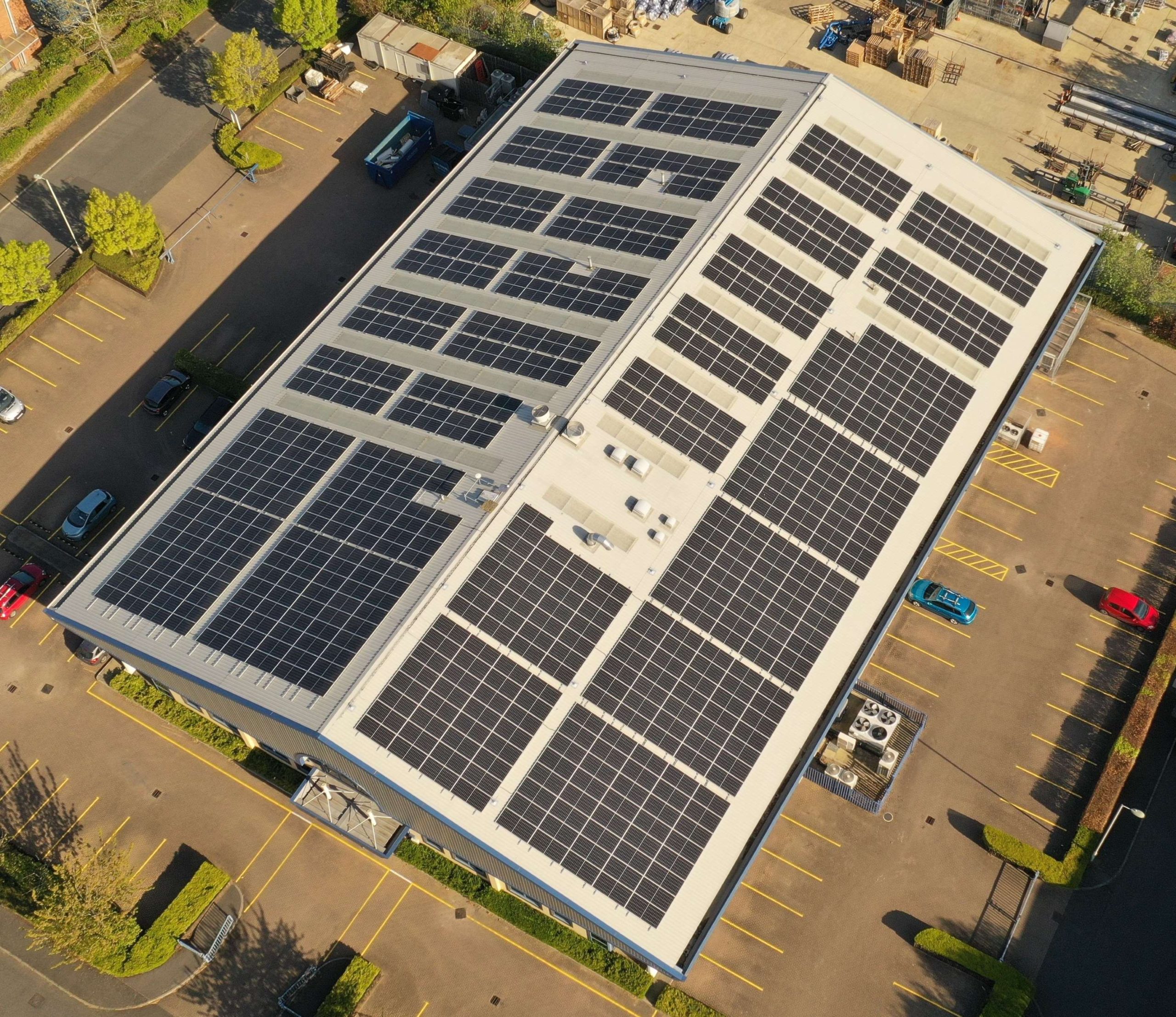Back in 2021, we set ourselves the target of making Sonardyne carbon neutral by the end of 2025, covering all direct and indirect emissions including those associated with manufacturing as well as supply chain activities from all our UK sites and operations. There is no better time than now to update you on some of the fantastic work the Sonardyne team has achieved.
So far, we haven’t said much about how that journey has been going so I thought it would be good to give you, our stakeholders, an update on progress so far… We do want to stand out from the noise of targets, it’s really not just about creating climate targets, we also must take climate action. But that action, if we are to be sustainable as a business, generating value for all our stakeholders, must be a planned and considered sequence of change, executed as quickly as we can.
If you come and visit us today, the most visible signs of our drive for sustainability are 1,300 solar panels on the roofs at Blackbushe Business Park. But there are many not-so-visible improvements that have been made in how we go about our business. Our lighting has been upgraded to LED throughout and we’ve installed a site-wide building management system to intelligently control our energy usage, to name but two. Our final investment in 2023 was in voltage stabilisation equipment, which stabilises the power supply into our buildings, ensuring electrical plant runs at peak efficiency, thus reducing consumption and emissions.

Our three buildings at Blackbushe Business Park are topped by 1,300 solar panels, but our drive to become carbon neutral by 2025 extends far beyond solar power.
In 2024, we will eliminate the last gas-based heating with a major heating and ventilation upgrade in Ocean House. This will mean that all our buildings on the Blackbushe site will be heated by air-source heat pumps. Doing the right thing and committing to it properly has also had real business benefits, beyond saving 120 tonnes of carbon a year, we have also saved in the order of 30% on our energy costs.
At the same time, our energy and finance teams have been diligently working through the three ‘scopes’ of emissions as defined by the Greenhouse Gas Protocol and now have a systematic calculation of our emissions for all applicable scopes and sub-categories. Methodologies and calculation processes have been developed and refined to enable this very complex activity to be considerably less challenging going forward. Our calculations determined that scope 3 emissions (indirect emissions from upstream and downstream activities), particularly in the purchased goods and services category, accounted for by far the most emissions generated by the company (circa 10,000 tonnes of carbon dioxide equivalent in 2023), which must be eliminated or offset. This work has provided us with a very solid foundation from which to plan our next steps in further reducing our emissions.
We can’t eliminate all our emissions, so that raises a series of tricky questions of how to go about offsetting. Who do we trust to offset our emissions for us? What is a good scheme or a bad scheme? Where should we offset? We spent quite a bit of time looking at partners to work with, and in 2023 we made our first foray into offsetting with Carbon Neutral Britain. We were impressed with their approach to supporting projects regulated through the Verra – Verified Carbon Standard, the Gold Standard – Voluntary Emission Reductions and the United Nations – Certified Emission Reductions programmes. As the three largest, and most regulated carbon offsetting standards used globally by businesses, this ensures the measurements and tonnes of CO₂ equivalent offset are as accurate and verified as we can achieve. It will certainly be interesting to see how this part of the carbon economy develops.
In 2024, we will be looking into our supply chain in more detail to further reduce our emissions. We will also be embedding sustainability more deeply into our business processes: from considering how staff travel, where we buy materials, through the operation of our buildings, to the purchase of new capital plant.
Finally, to give all our stakeholders confidence, we will also start work this year on taking the next step in really proving what we are doing. This means a formal independent audit against a globally recognised standard. Whilst we were originally planning to work to PAS 2060, 2023 has seen the publication of ISO14068 ‘Climate change management – Transition to net zero’ which builds on and will replace PAS2060. We will aim for this audit in 2025.
It’s a journey, and we are making real progress. As such, I’m confident that, as Sonardyne continues to grow, we are also taking action to ensure our carbon intensity is reducing with every passing year.
I’ll check in with you again later in the year and perhaps look beyond the triple bottom line of people, planet and profit and look to consider resilience in relation to sustainability. The combination of my hobby of restoring a hazel coppice and relating some current thinking on the very slow business of woodland management curiously has insights for running a fast-paced technology business.

